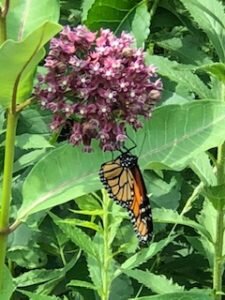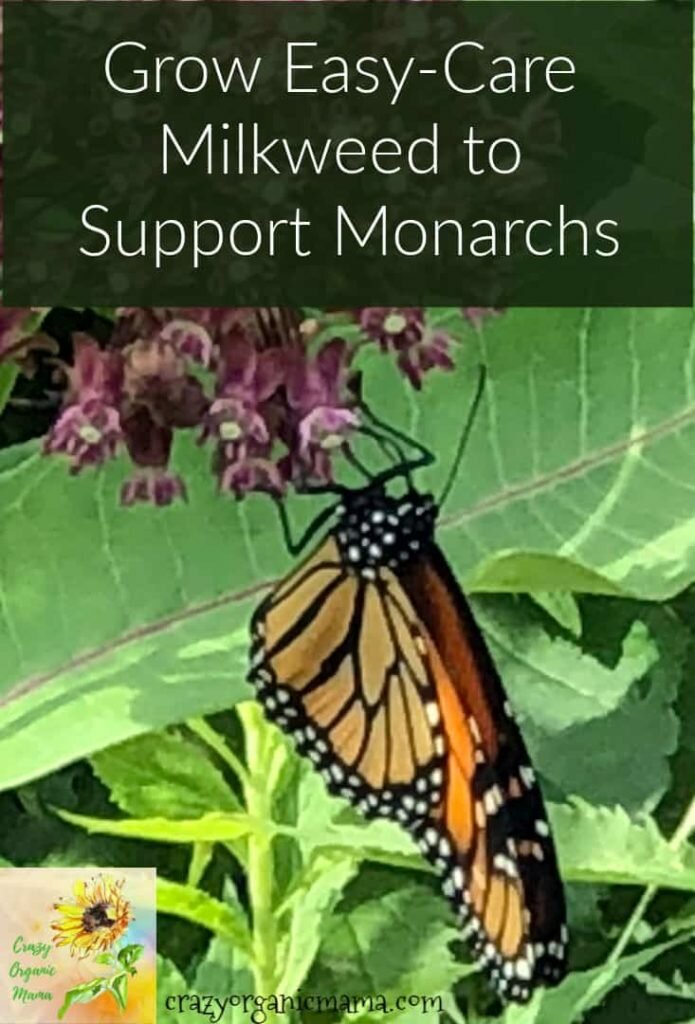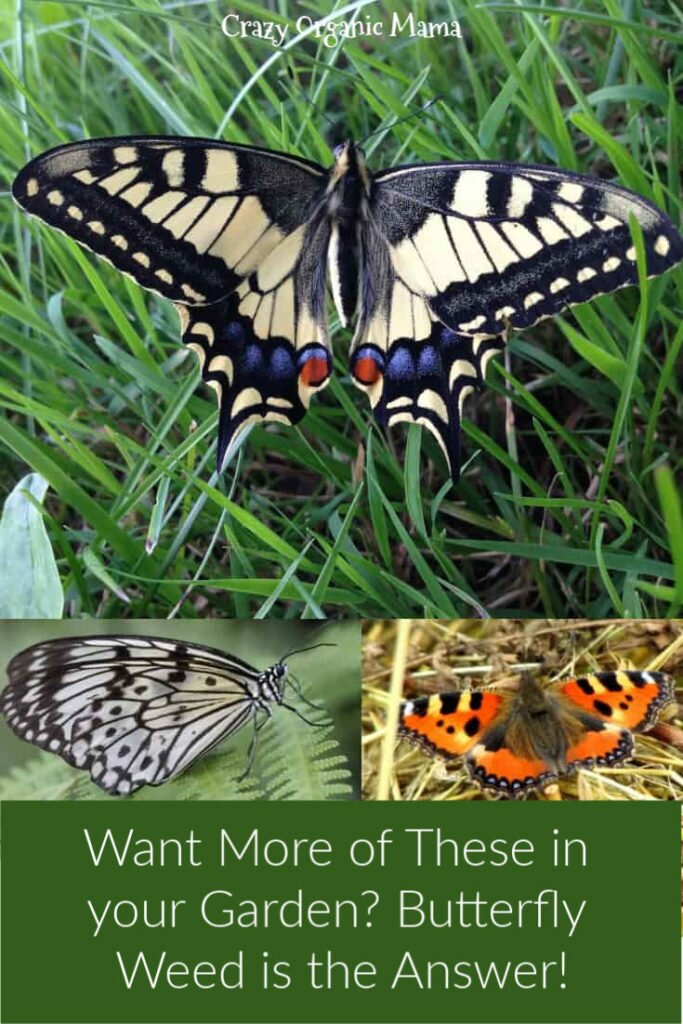How to Spread Kindness in Life Like a Milkweed Spreads its Seeds
 Or, Cultivating an Attitude of Gratitude. Catchy title, huh? Totally stole it from my pastor at our church. Yup, I’m naughty!
Or, Cultivating an Attitude of Gratitude. Catchy title, huh? Totally stole it from my pastor at our church. Yup, I’m naughty!
When you look at this plant, you’ll say, “Oh, a milkweed.” I’d know it anywhere with all the fluff. Bzzzzz….sorry, wrong answer. Well, mostly. For my fellow plant nerds, this is an Asclepias tuberosa, known to the non-plant nerd as butterfly weed.
Milkweed is in the same genus, Asclepias. Two plants in the same genus are kind of like kissing cousins. In fact, some can even crossbreed, so I guess they really are kissing cousins!
But whatever you want to say about this genus, every plant in it loves to spread seed far and wide. All those fluffy little floofs have a seed at the end, and one plant can hold hundreds of them.
Get a good puff of wind and off they go, floating far and wide on updrafts and landing in brand new places to start again the next spring. If they happen to land in a stream or river, they can travel for miles before ending up on a distant shore.
This post contains affiliate links. This means that if you click a link and make a purchase, I will receive a small commission that will help support this blog. This will not affect the price you pay.
Butterfly Weed Growing Tips

Butterfly weed (Asclepias tuberosa)- Hardy in zones 3 through 9, and grows about 2 feet tall. The flowers can be red, orange or yellow, and they’re all really pretty. Butterflies, hummingbirds and bees all love it, and best of all, it’s an alternate food source (milkweed being the primary one) for the monarch caterpillar.
As butterfly weed is a North American native, it is stupid easy to grow, particularly in poor soil, so don’t feed it. It also doesn’t like lots of moisture, so don’t bother watering it. Basically, just starve the stuff and it’ll do fine.
One thing to keep in mind is that, because of all its lovely seeds, you will have lots and lots of butterfly weed in your garden within a year or two if you don’t clip off the seed pods when they form in autumn. I personally don’t care if it spreads all over the place, so I don’t bother, but if you have a more formal garden or small space, you might want to keep the clippers handy. You can order seeds here, if you would like.
Common Milkweed Care Tips

Common milkweed (Asclepias syriaca)- Hardy in zones 3 through 8, grows a little taller than butterfly weed at about 3 feet tall. The flowers are usually lavender and in a globe-shaped head. Again, very pretty when blooming, and butterflies, bees and hummingbirds love them.
They are the primary food source for monarch caterpillars, so planting them is certainly helpful in light of current declines in Monarch populations.
They’re very similar to butterfly weed in that starving them is best, and they WILL spread. Again, be sure to clip the very distinctive seed heads in fall if you don’t want them everywhere!
I have noticed monarch caterpillars munching on the seed heads of both butterfly weed and common milkweed while they are still green, so if you can hold off clipping them until after the caterpillars are gone (the beginning of October in Zone 6b), that’s best.
If you do clip them, WEAR GLOVES or WASH YOUR HANDS thoroughly after doing so as the sap is very irritating and getting it in your eyes could land you in the ER, which would most likely ruin your day. Here’s a nice milkweed seed collection, if you’re so inclined.
Important Safety Notice
One important note: There are multiple varieties of milkweed, several of which are not hardy in colder climates. For example, tropical milkweed (Asclepias curassavica) is only hardy in zones 8a through 11.
You can, if you’re cheap like me and don’t want to have to buy more the following year, dig it up before your first frost and grow it in a pot on a sunny windowsill for the winter. Then, in early spring, you can take stem cuttings and have even more plants started before the summer.
However, if you bring the plant in, PLEASE BE AWARE THAT IT IS TOXIC TO PETS. My cats are a pain about my plants, but they don’t seem to like milkweed. It does have a weird, musky smell (not strong, but there), and I don’t think they like it, so they stay away.
However, DO NOT let your cats or dogs chew on the plant or come in contact with the sap. If it should happen, contact your vet ASAP, as in 911 ASAP. Trust me on this.
Thankfulness Can Make a Huge Impact
Much like these plants, thanksgiving has the potential to make a big impact, not only in our own lives, but in the lives of those around us.
I’m sure you’ve read self-help books or blog posts that encourage writing a list of “10 things you’re thankful for”, or keeping a gratitude journal and adding to it daily. There is absolutely nothing wrong with that. I can come up with a bunch of things I’m thankful for right here and now without much trouble: Family, friends, furbabies, fall foliage. Wow! All F’s. I’m talented.
Thankfulness at Home
Anyway, what I’m really talking about with sowing seeds of thankfulness is more than this. When’s the last time you thanked your partner for taking out the trash or loading the dishwasher, or your child for cleaning his or her room? No, you don’t HAVE to thank them for that stuff, they should be doing it anyway, but how will your thank you make them feel? How will it make you feel?
If you catch your family doing things you’re thankful for, thank them consistently and see how it transforms your home life. You might even discover they start thanking you for the things you do…or not, but we can always hope!
Thankfulness in Public
Let’s take it even further. Do you thank those around you every day?
Just a silly example: Whenever I happen to be outside when the garbage men come, I wave and say thank you. Not a big deal, right? Let me tell you, my garbage bin is always placed back almost exactly how I placed it with the lid carefully closed, sometimes so well that I have to check to see if they took it at all!
One day, I forgot to put it out. I finally remembered and put it by the curb, although I was pretty sure they had already gone. They had, but their route took them back by my house. They stopped, reversed their truck and took my bin anyway!
My neighbor, whom I know has complained about the pickup men to the company (unjustified, mind you), comes home to find his garbage bin on its side almost every week, and on weeks it is actually upright, the lid is ALWAYS open. No biggie when it’s sunny out, but what a pain when it’s raining!
A little thank you can go a long way, but the big takeaway from this…..garbage men have long memories, so beware.
Do you thank the bagger at the grocery store or the person who gives you your order at the fast food place? How about the guy who makes your coffee at Starbucks or Dunkin’, especially if he remembers your order every day before you even open your mouth? My hubby goes in to Dunkin’ every morning before work and the guy actually has his coffee poured before he gets there.
Yes, they’re just doing their jobs, but being appreciated is such a nice thing, and all it takes is a thank you.
And the funny thing is, when you start looking for people to thank, you might find yourself feeling more thankful too.
So, don’t wait for Thanksgiving or any other special day, start today and make like an Asclepias or a butterfly weed or a milkweed, whatever you want to call them, sowing seeds of thankfulness far and wide.
I even found a book to help you with spreading thankfulness: 100 Days of Gratitude and Random Acts of Kindness. How about these adorable pins? They’re sure to put a smile on someone’s face. Go on and check them out!
I hope you’ve enjoyed this post. Please pin the below images on Pinterest if you’re so inclined. Otherwise, smile and have a crazy organic day.





2 comments
I am in South Florida and grow milkweed. It’s the most amazing experience to see monarchs in your garden. I do give mine lots of water though, I guess because it’s so warm here. I have citrus swallowtails too 😀
I imagine you’d need to give EVERYTHING lots of water there as it gets so hot! We get a fair amount of rain here, plus it’s fairly rare to go much above 90 for more than a day at a time, so I guess we’re lucky that way. Thank you for commenting!